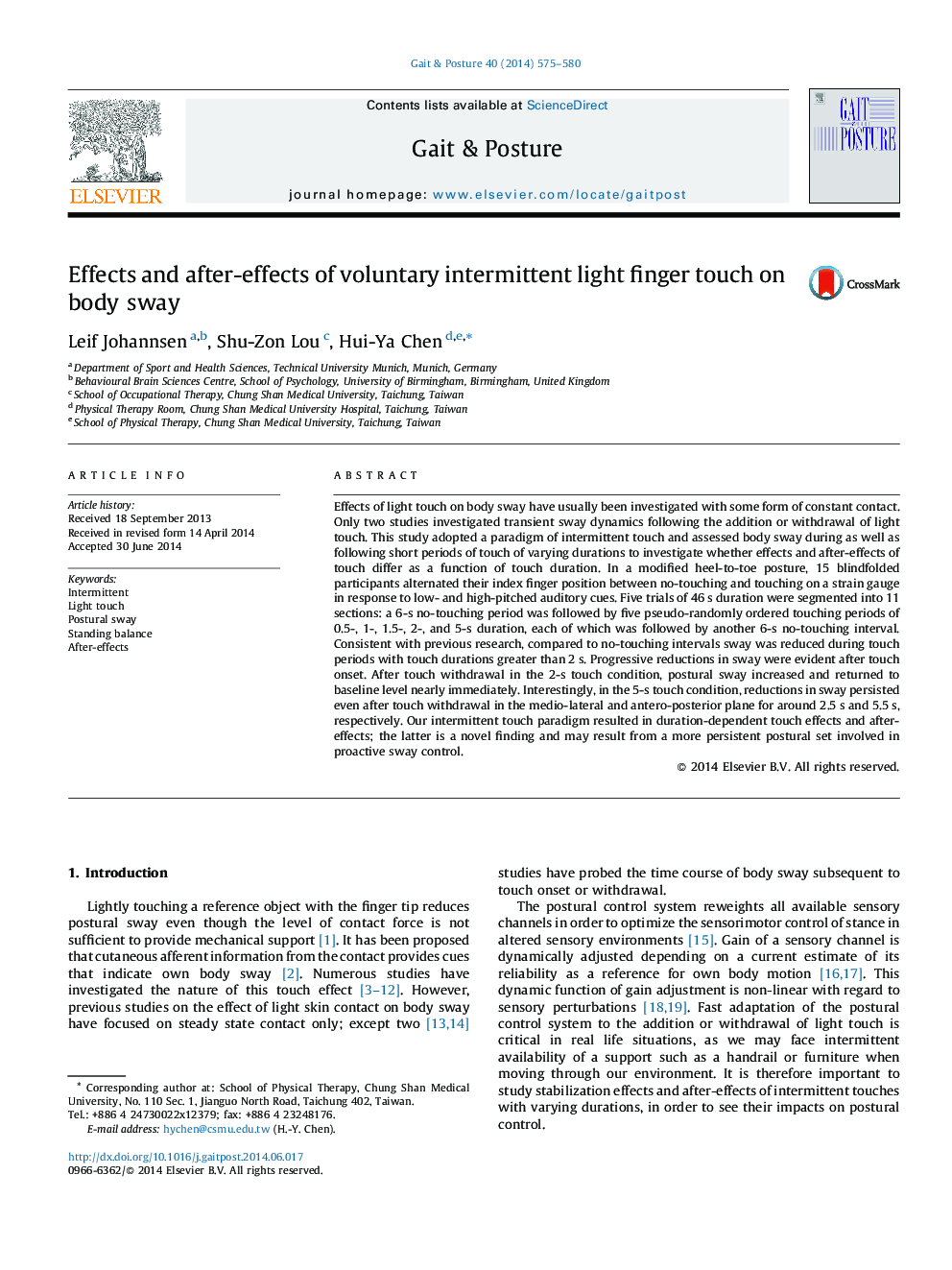| کد مقاله | کد نشریه | سال انتشار | مقاله انگلیسی | نسخه تمام متن |
|---|---|---|---|---|
| 6205937 | 1603853 | 2014 | 6 صفحه PDF | دانلود رایگان |
- We study after-effects with a train of five intermittent touches of various durations.
- Progressive reduction in sway is evident after onset of 2- and 5-s touches.
- Postural sway after touch withdrawal did not mirror its reduction after touch onset.
- The touch after-effects last for 5.5Â s after withdrawal of 5-s touch.
- Intermittent touch may result in a more persistent postural set of proactive control.
Effects of light touch on body sway have usually been investigated with some form of constant contact. Only two studies investigated transient sway dynamics following the addition or withdrawal of light touch. This study adopted a paradigm of intermittent touch and assessed body sway during as well as following short periods of touch of varying durations to investigate whether effects and after-effects of touch differ as a function of touch duration. In a modified heel-to-toe posture, 15 blindfolded participants alternated their index finger position between no-touching and touching on a strain gauge in response to low- and high-pitched auditory cues. Five trials of 46Â s duration were segmented into 11 sections: a 6-s no-touching period was followed by five pseudo-randomly ordered touching periods of 0.5-, 1-, 1.5-, 2-, and 5-s duration, each of which was followed by another 6-s no-touching interval. Consistent with previous research, compared to no-touching intervals sway was reduced during touch periods with touch durations greater than 2Â s. Progressive reductions in sway were evident after touch onset. After touch withdrawal in the 2-s touch condition, postural sway increased and returned to baseline level nearly immediately. Interestingly, in the 5-s touch condition, reductions in sway persisted even after touch withdrawal in the medio-lateral and antero-posterior plane for around 2.5Â s and 5.5Â s, respectively. Our intermittent touch paradigm resulted in duration-dependent touch effects and after-effects; the latter is a novel finding and may result from a more persistent postural set involved in proactive sway control.
Journal: Gait & Posture - Volume 40, Issue 4, September 2014, Pages 575-580
